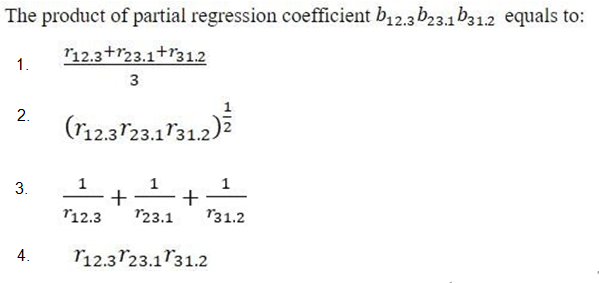Question
A shopkeeper sold three types of items A, B and C. He
sold items A and B in the ratio of 16:21, while sold items C and A in the ratio of 5:8. The price of each item C is Rs. 16 and each item B is Rs. 9. The total revenue earned from selling all the item C is Rs. 145 less than the total revenue earned from selling all the items B. Find the number of items A sold by the shopkeeper.Solution
Let, number of item A and number of item B sold by shopkeeper be ‘16a’ and ‘21a, respectively. Number of item C sold by shopkeeper = (5/8) × 16a = 10a So, 21a × 9 – 10a × 16 = 145 189a – 160a = 145 29a = 145 a = 5 Number of item A sold by shopkeeper = 16a = 80
If the first, fifth and ninth decile of frequency distribution xi ∣ fi are 3,10,16, respectively, then Kelly's coefficient of skewness is:
Completely Randomized Design provides maximum number of degree of freedom for the:
The curve obtained by joining the points, whose x-coordinates are the upper limits of the class interval and y-coordinates are corresponding cumulative...

The median of following observations 8, 9, 10, 8, 8, 10, 8, 9 is
60% of the employees of a company are college graduates. Of these, 10% are in sales. Of the employees who did not graduate from college, 80% are in sal...
If price-quantity are related for base year (0) and current year (1) are
∑ : p0q0 = 260,∑ : p1q0 = 395,∑ : p0q1 = 264,∑ : p1q1 = 422, t...
Which of the following is NOT a type of data classification?

For two items, tea (1 kg) and sugar (1 kg), the prices in the year 2019 were ₹100 and ₹50, respectively, whereas the prices in the year 2020 were �...
Relevant for Exams:


